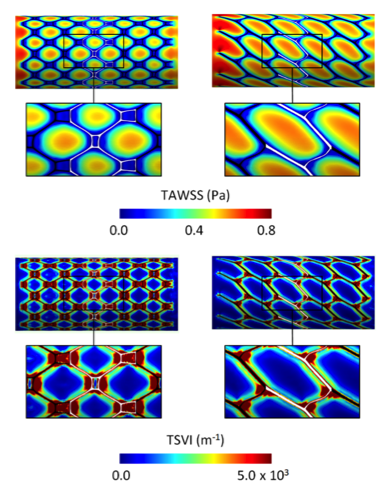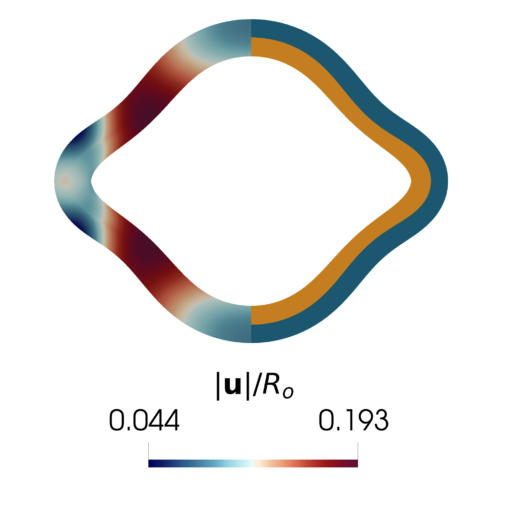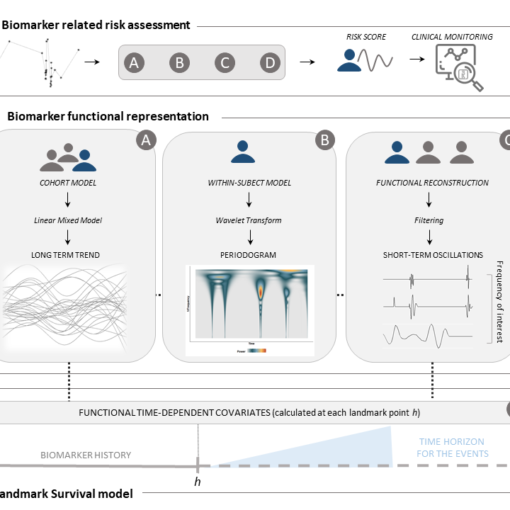A new MOX report entitled “Design of innovative self-expandable femoral stents using inverse homogenization topology optimization” by Carbonaro, D.; Mezzadri, F.; Ferro, N.; De Nisco, G.; Audenino, A.L.; Gallo, D.; Chiastra, C.; Morbiducci, U.; Perotto, S. has appeared in the MOX Report Collection.
The report can be donwloaded at the following link:
https://www.mate.polimi.it/biblioteca/add/qmox/29/2023.pdf
Abstract: In this study, we propose a novel computational framework for designing innovative self-expandable femoral stents. First, a two-dimensional stent unit cell is designed by inverse homogenization topology optimization. In particular, the unit cell is optimized in terms of contact area with the target of matching prescribed mechanical properties. The topology optimization is enriched by an anisotropic mesh adaptation strategy, enabling a time- and cost-effective procedure that promotes original layouts. Successively, the optimized stent unit cell is periodically repeated on a hollow cylindrical surface to construct the corresponding three-dimensional device. Finally, structural mechanics and computational fluid dynamics simulations are carried out to verify the performance of the newly-designed stent. The proposed workflow is being tested through the design of five proof-of-concept stents. These devices are compared through specific performance evaluations, which include the assessments of the minimum requirement for usability, namely the ability to be crimped into a catheter, and the quantification of the radial force, the foreshortening, the structural integrity and the induced blood flow disturbances.




